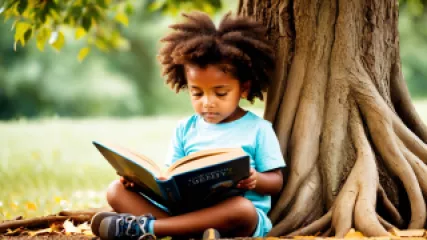Exploring Child Resilience Building Through a Story
Exploring Child Resilience Building Through a Story
Child resilience is a topic that has gained significant attention in recent years, as parents and educators recognize the importance of equipping children with the necessary tools to navigate life's challenges. Resilience training for children involves fostering their ability to bounce back from adversity, develop coping mechanisms, and build mental well-being. While there are various approaches to resilience building, one unique and effective method involves exploring resilience through stories.
Stories have always been a powerful tool for teaching lessons and conveying messages. They capture our imagination, evoke emotions, and provide valuable insights into the human experience. By delving into the world of storytelling, we can uncover valuable lessons and principles that can guide us in nurturing child resilience. In this article, we will explore the concept of child resilience building through the lens of a compelling story, drawing inspiration and wisdom from its narrative.
The Power of Stories in Shaping Child Resilience
Stories have an innate ability to captivate young minds and engage their emotions. Whether it's a classic fairytale, a contemporary novel, or an animated film, stories allow children to connect with characters, experience their triumphs and tribulations, and learn from their journeys. Through the power of storytelling, children gain insights into the complexities of life, helping them develop empathy, problem-solving skills, and resilience.
When children encounter characters who face adversity, they witness firsthand how individuals overcome challenges, adapt to new situations, and grow stronger. By witnessing these narratives, children internalize the idea that setbacks are not permanent roadblocks but opportunities for growth and personal development. Stories provide a safe space for children to explore their emotions, fears, and aspirations, encouraging them to build resilience and face life's obstacles with courage.
Lessons from a Story: "The Tree of Resilience"
To illustrate the power of storytelling in child resilience building, let us delve into the enchanting tale of "The Tree of Resilience." In this story, we follow the journey of Sarah, a young girl facing various challenges in her life. Through her encounters with a wise old tree, Sarah learns valuable lessons about resilience, adaptability, and self-belief.
"The Tree of Resilience" is a heartwarming story that teaches children the importance of staying strong in the face of adversity. It emphasizes the power of resilience and offers practical strategies for developing inner strength.
Source
Lesson 1: Embracing Change and Adaptability
In the story, Sarah initially resists change and finds it difficult to adapt to new circumstances. However, as she spends time with the tree, she discovers the beauty and strength that lies in embracing change. The tree teaches her that just as it sheds its leaves and grows anew each season, she too can adapt and thrive in the face of change.
Through this lesson, children learn that change is inevitable and that flexibility and adaptability are essential skills for navigating life's ups and downs. They understand that by embracing change, they can discover new opportunities and develop resilience in the process.
Lesson 2: Building Inner Strength through Self-Belief
An important aspect of resilience is the belief in one's own abilities. In the story, Sarah lacks confidence and often doubts herself. However, as she spends time with the tree, she realizes the importance of self-belief. The tree encourages her to trust in her capabilities and reminds her that she possesses the strength to overcome any obstacle.
Through this lesson, children learn the power of positive self-talk and cultivating a growth mindset. They understand that by believing in themselves, they can face challenges head-on and develop resilience in the face of adversity.
Lesson 3: Seeking Support and Building Connections
In the story, Sarah discovers the significance of seeking support and building connections. The tree serves as a guiding presence, offering wisdom and encouragement. Sarah learns that she does not have to face challenges alone and that seeking support from others can provide comfort and strength.
This lesson teaches children the importance of fostering relationships, reaching out for help when needed, and building a support network. They understand that resilience is not solely an individual pursuit but can be nurtured through the support and guidance of others.
Applying the Story Lessons in Child Resilience Building
The story of "The Tree of Resilience" provides valuable lessons that can be applied in real-life situations to foster child resilience. Here are some practical strategies for incorporating these lessons into your parenting or educational practices:
1. Engage in Reflective Discussions
After reading or watching a story that explores resilience, engage children in reflective discussions. Ask them about the challenges the characters faced, how they overcame them, and what they learned from their experiences. Encourage children to relate these lessons to their own lives and discuss ways they can apply them.
2. Encourage Creative Expression
Allow children to express their understanding of resilience through creative activities such as drawing, writing, or role-playing. This enables them to process their emotions, explore different perspectives, and reinforce the lessons learned from the story.
3. Model Resilient Behavior
Children learn by observing the behaviors of adults around them. Model resilience in your own life by demonstrating perseverance, adaptability, and positive thinking. Show children how you overcome challenges and encourage them to do the same.
4. Provide Safe Spaces for Failure
Resilience is built through trial and error. Create safe spaces for children to experience failure and learn from their mistakes. Encourage a growth mindset that embraces setbacks as opportunities for growth and support children in developing problem-solving skills.
5. Foster a Supportive Environment
Build a supportive environment where children feel comfortable seeking help and expressing their emotions. Encourage open communication, empathy, and teamwork. Teach children the value of building relationships and seeking support when needed.
Conclusion
Child resilience building is a crucial aspect of promoting mental well-being and equipping children with the tools they need to thrive. Stories provide a powerful medium for exploring resilience, allowing children to connect with characters, learn valuable lessons, and internalize core principles. By embracing the lessons from stories like "The Tree of Resilience," we can guide children towards developing resilience, adaptability, and a strong sense of self-belief. By incorporating these lessons into our parenting and educational practices, we empower children to face life's challenges with resilience and emerge stronger from adversity.






